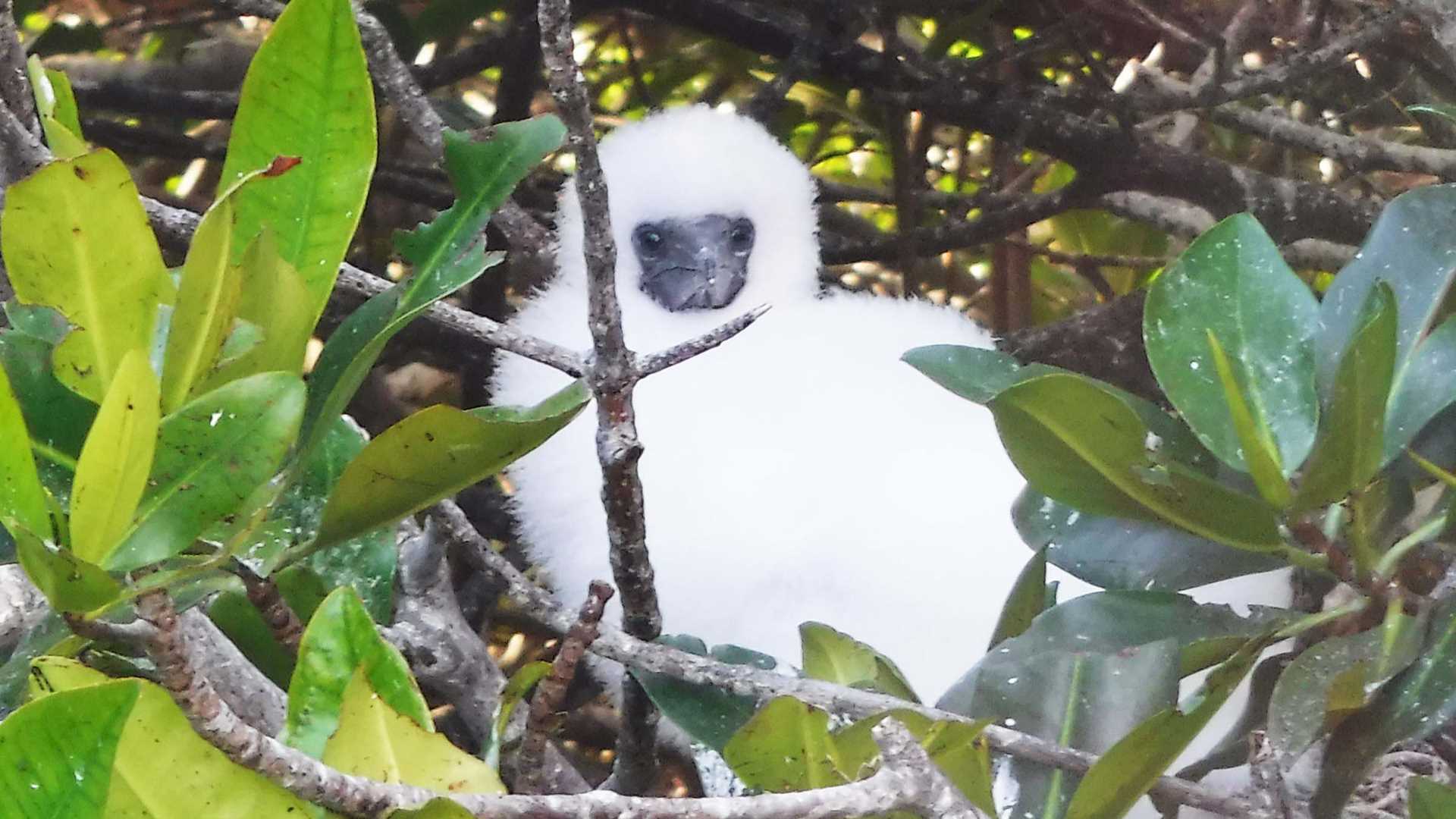Genovesa Island is overwhelming. Right after we land on the coral beach of Darwin Bay, we walk on a trail where swallow-tailed gulls, red-footed boobies, Nazca boobies and great frigate birds nest. All these sea birds find here an ideal area for building their nests without the presence of predators. The red footed boobies nest on the red mangroves that are in general remarkable attractors of wild life. Nazca boobies and swallow-tailed gulls nest on the ground, and the frigate birds on bushes.
Not only that we can see them from a very short distance, also we can hear their songs and learn how to differentiate the diverse spices from each other. When taking a few seconds to close our eyes and just being able to hear this beautiful songs all along, makes me feel as if I was part of a natural symphony.
Later on the afternoon we ride the zodiacs around the cliffs to finally meet the fur seal on the rocks, close to our second trail on Prince Philip’s Steps. The elegant red-billed tropic bird got our attention with its strong song while flaying towards the cliff to find its nest and disappear inside of a crake on the cliff.
On this area the blue footed boobies nest on the branches of incense trees and the Nazca boobies on the ground. At the end of this trail we sit on the lava ground, and contemplate the landscape, where thousands of storm petrels fly in erratic circles. A breathtaking scene, the power of it is enforce by the presence of the short-eared owl, a diurnal predator on Genovesa Island, who will reach into the shallow nest cavities to prey on the storm petrels nests.
The fresh ocean breeze and the songs of the sea birds, will make our ride back to the National Geographic Endeavour one of many memories built along this trip for the rest of our lives.







